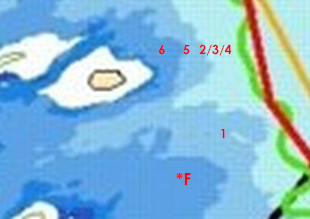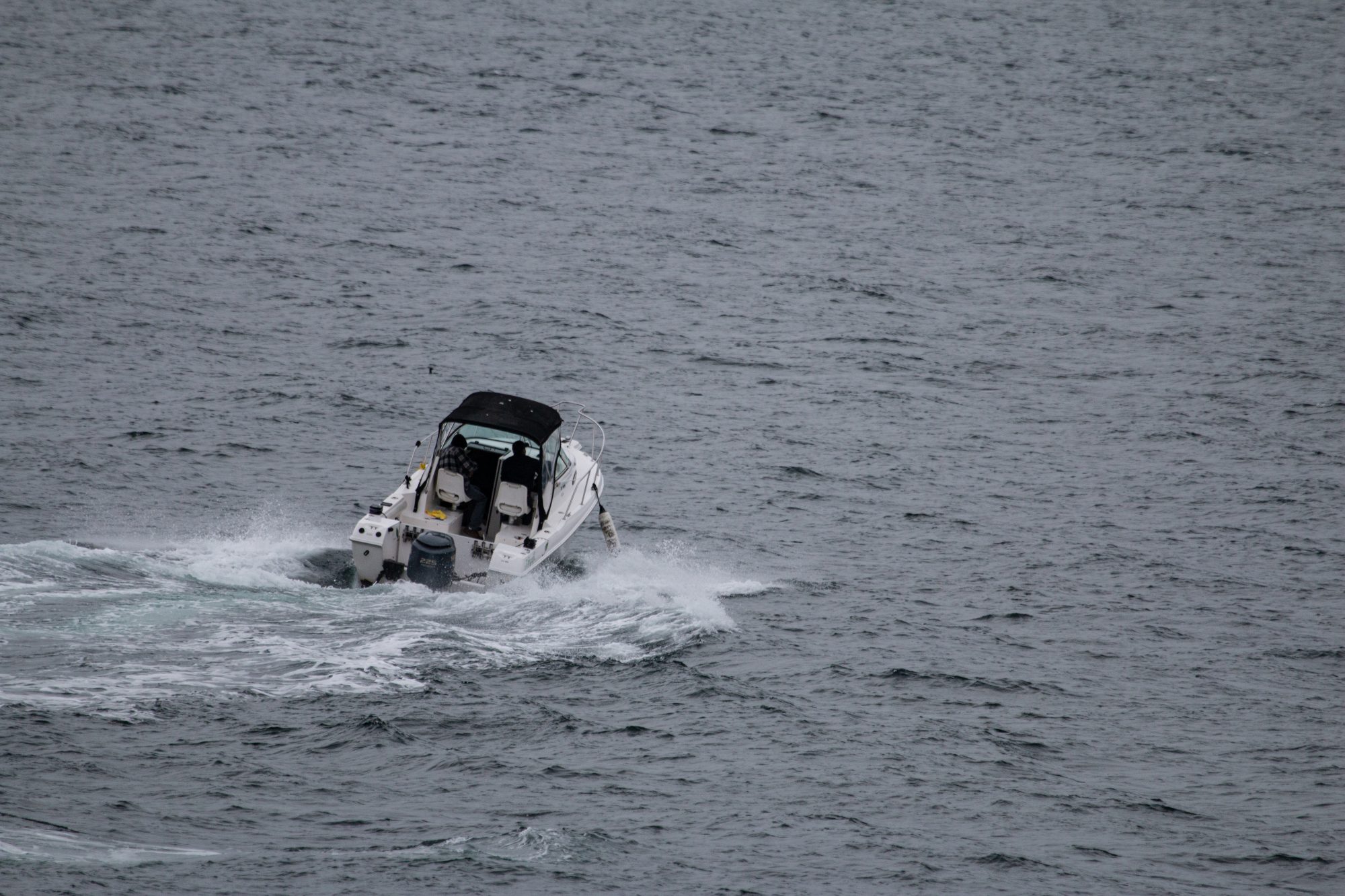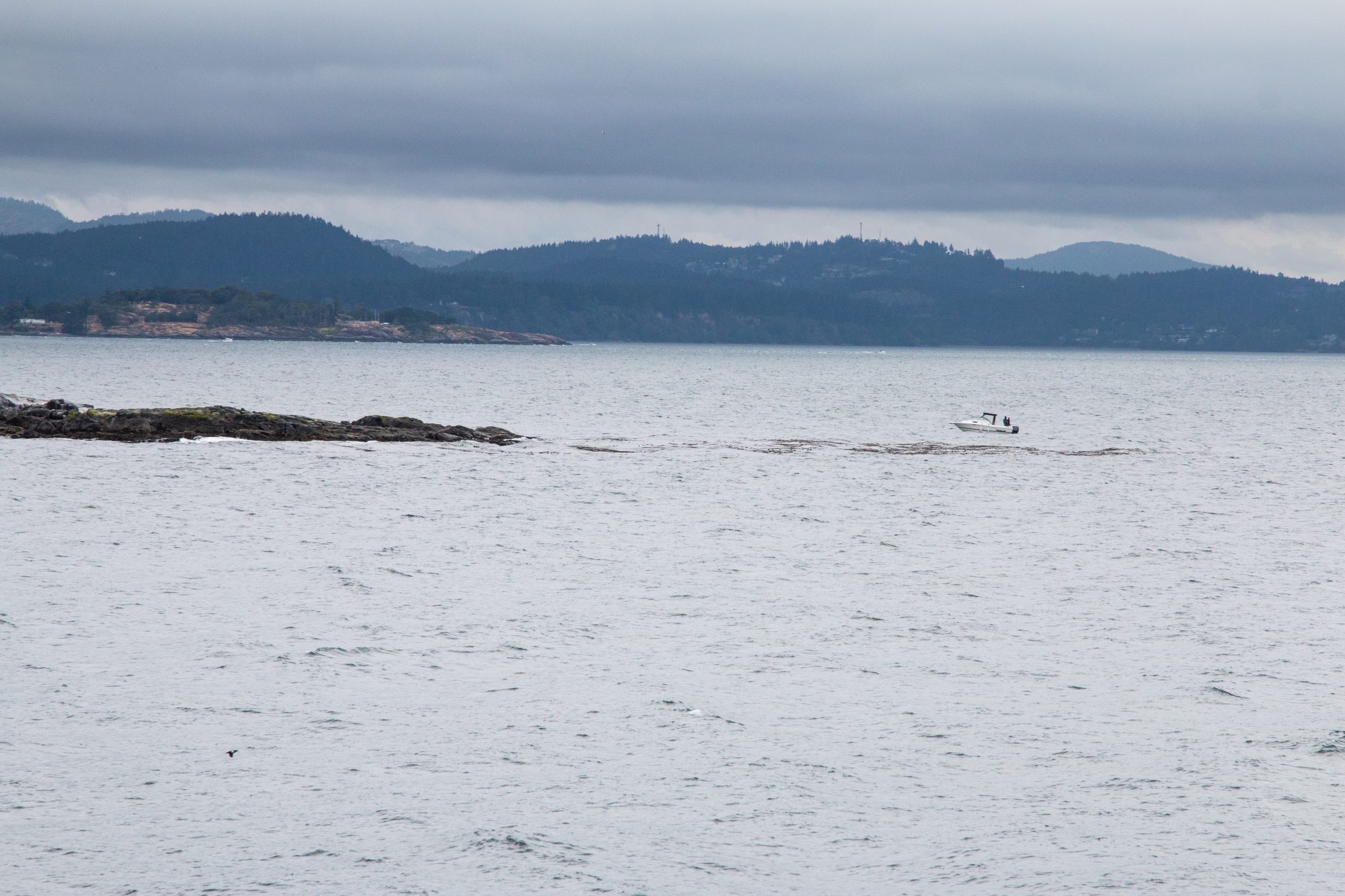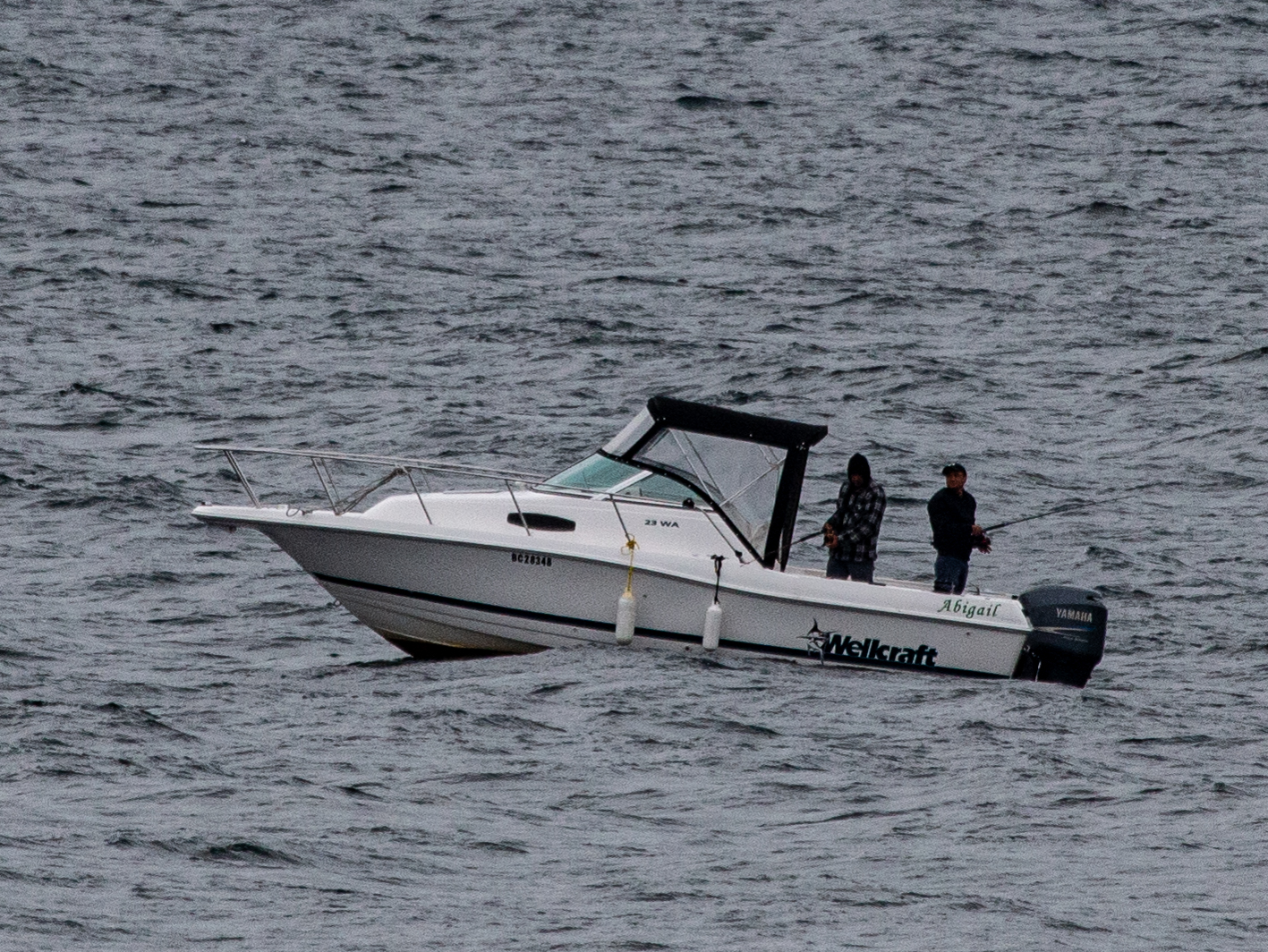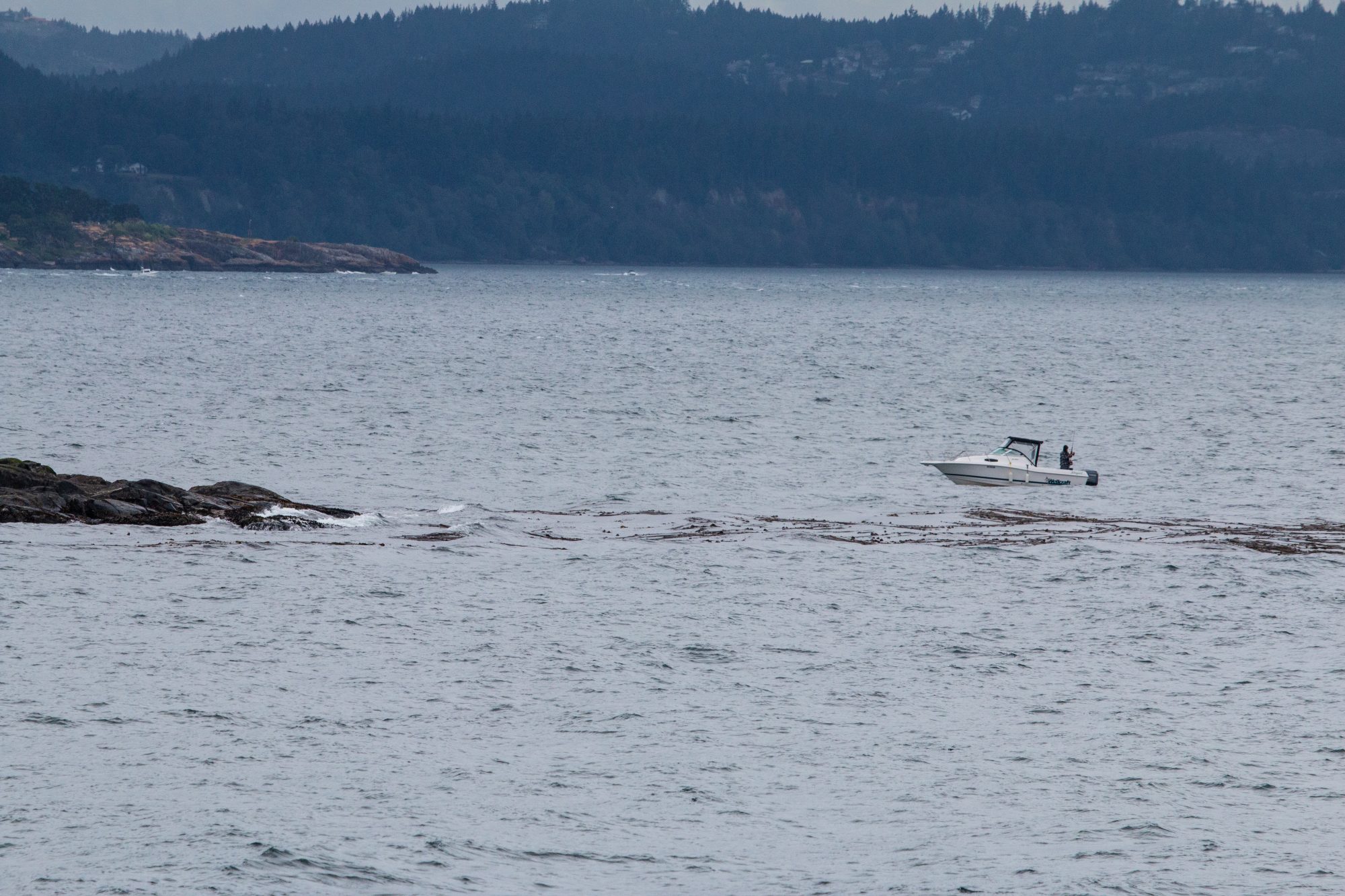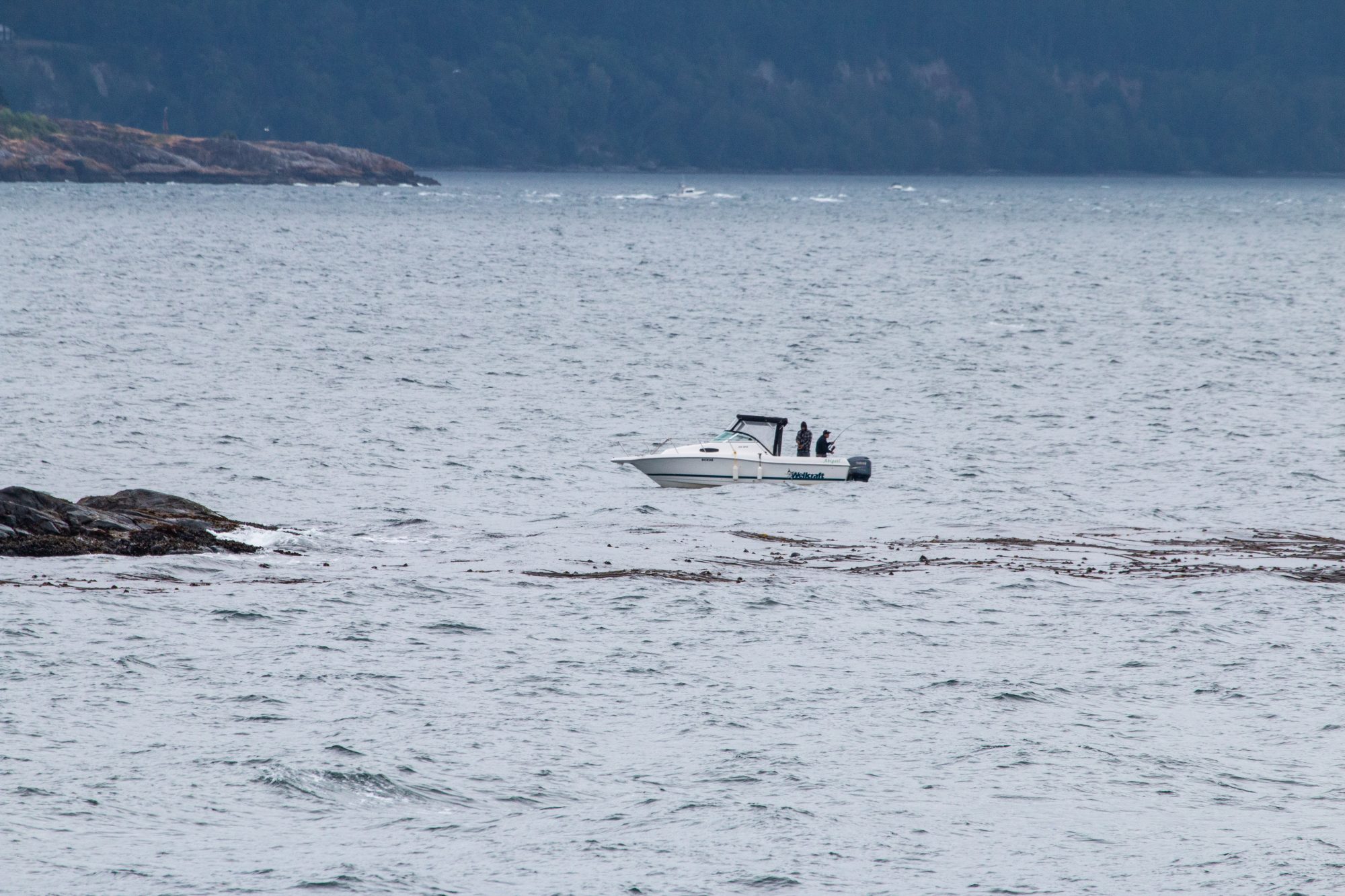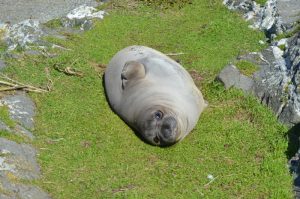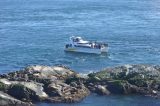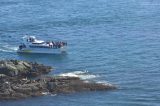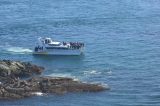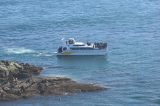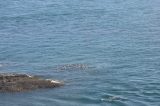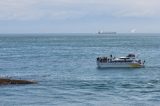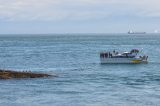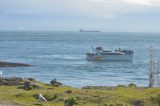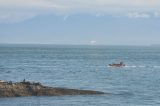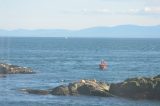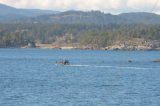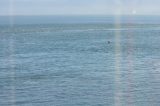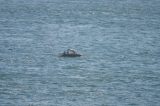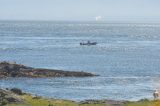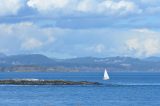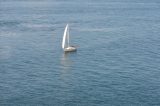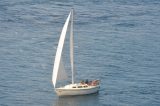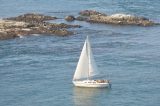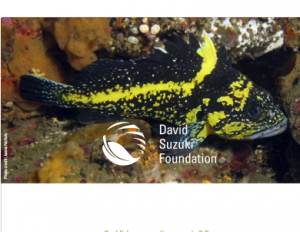Sunny
Wind: 5-16 knots from the SW and S in the early morning, NE until 17:00, SE for a few hours and calm after 20:00
Air Temperature: Low 6.6°C, High 10.3°C
Ocean Temperature: 8.9°C
The underwater camera is back up and running, after a few weeks offline. The power issue has been solved. Algae on the dome around the camera is partially obstructing the view, but it will be cleaned soon by divers from the college.
This afternoon, there were two low flying aircraft: a floatplane and a Search and Rescue Helicopter.
Three fishing boats passed through the ecological reserve today. One boat spent an hour fishing within the Rockfish Conservation Area, which is prohibited by the Department of Fisheries and Oceans (DFO). The Rockfish Conservation Area is within the 40m depth contour of Great Race Rocks and Rosedale Reef, marked by the green buoy to the southeast of Great Race Rocks.
The crane needs to be run and serviced once a month. Today, it was used to lift a 12m log from the jetty beach to the boardwalk, where it will be chopped into firewood. In hindsight, it would have made it less challenging to cut the log in half while it was on the beach. Although, 6m sections wouldn’t have been as much fun to manoeuvre with the crane.
During the low tide in the afternoon, there was a large number of harbour seals and sea lions hauled out on the rocks. Two branded steller sea lions were seen on the South Islands. Both sea lions were branded as pups at Rogue Reef, Oregon. 524R was branded in 2007. 365Y was branded in 2013.
-

-
The underwater camera is back online. Now it needs a cleaning from divers. Stay tuned.
-

-
Four people on a boat violating the Rockfish Conservation Area by fishing within the 40m depth contour of Great Race Rocks.
-

-
The same boat, Island Girl, speeding (faster than 7 knots) through Middle Channel.
-

-
62 harbour seals were counted on Turbine Rock during this afternoon’s low tide of 0.8m.
-

-
The log has been landed. It still needs some more support on land.
-

-
The log gets secured to the crane.
-

-
Amongst the group of california and steller sea lions, there are two branded steller sea lions: 365Y and 524R.

